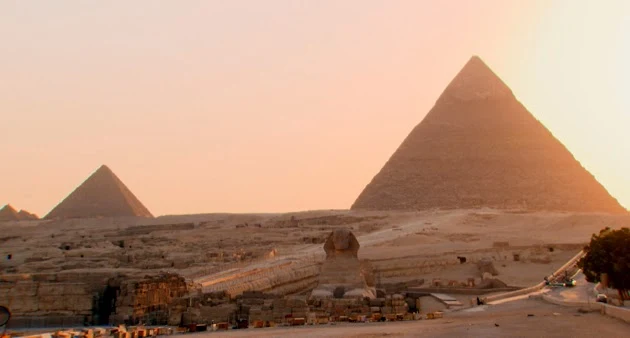The Pyramid of
Khafre (right) is the second largest of the pyramids at the Giza Necropolis. Ahead
of his Time Scanners show on the National Geographic Channel, structural
engineer Steve Burrows tells us how Egypt's iconic pyramids were built to last
for thousands of years.
Έχοντας
στα χέρια τους, μηχανήματα τελευταίας τεχνολογίας, κορυφαίοι επιστήμονες
σαρώνουν με λέιζερ τα αρχαία μνημεία και μας αποκαλύπτουν πολύτιμα μυστικά και
δίνουν απαντήσεις σε σημαντικά ερωτήματα.
Η
ομάδα, ταξιδεύει την Αίγυπτο για να μελετήσει τις πυραμίδες, τα ταφικά μνημεία
των πανίσχυρων Φαραώ, και να ανακαλύψει τα μυστικά της κατασκευής αυτών των
οικοδομημάτων, που αποτελούν τα πιο εντυπωσιακά κτίσματα του αρχαίου κόσμου.
Three-dimensional
laser scanning has revealed why the Great Pyramid of Giza is still standing
today.
Before the Great
Pyramid, the Egyptians hadn’t cut the stones accurately enough to make the
joints really tight. They had problems with what’s called ‘freeze thaw’. This
is when moisture gets into the joints, so if the weather gets cold enough, the
water freezes, solidifies and expands – pushing the joint apart. That cycle of
the joints being opened and closed effectively makes buildings fall apart, and
we have that problem today. The Egyptians had realised that – they knew that if
they could construct joints so tight that water couldn’t get in, then the
building would not destroy itself and it would last a long time. They did this in the Great Pyramid.



Δεν υπάρχουν σχόλια:
Δημοσίευση σχολίου